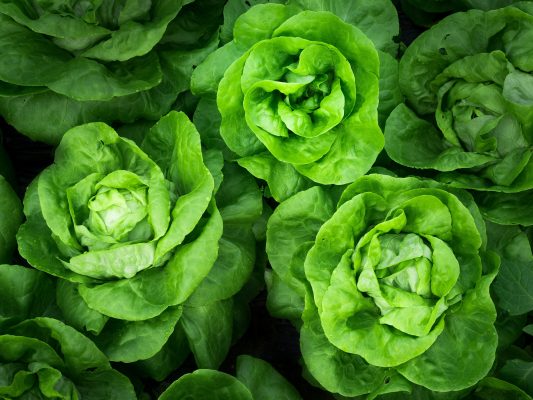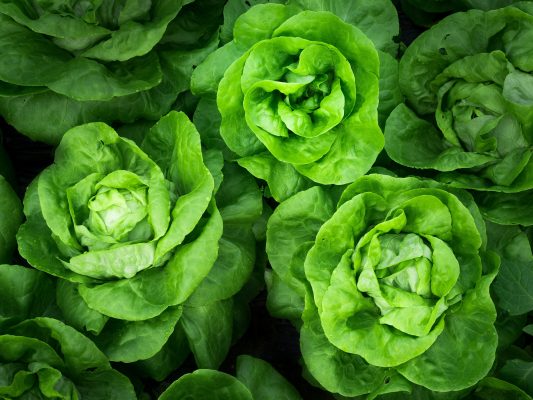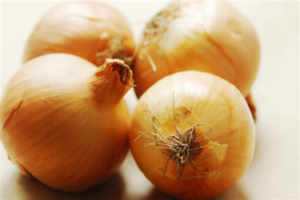
So your’e wondering “Can You Freeze Lettuce”.. Your’e in the right place!
Storing food can be done a different ways, freezing being one of them.
With vegetables however, the case is a little different. Vegetables like lettuce contain a large percentage of water.
When they are frozen, the water in them is transformed to ice which breaks down cell walls and leaves you with a slimy mess.
That’s why you need extra care and extra knowledge on how to properly freeze lettuce.
So to your question about freezing lettuce, the answer is simple: Yes and NO.
If you want to make a tossed salad with a vegetable that already contains 94% water, the answer is “NO”.
But for cooking and flavored uses, yes you can freeze lettuce!
The truth with freezing lettuce is: there’s only so much you can do. Leaving them out will cause them to spoil faster and freezing them will lead to loss of some flavor.
However, if you freeze them properly, you can keep them for about 6 months while maintaining most of their flavor.
Before we get all serious about the benefits of lettuce and how you can make them last longer, here are a few fun facts about lettuce.
Did you know?
Lettuce is one vegetable that is highly immune to any kind of preservation.
Iceberg lettuce takes eighty-five days from sowing to maturity.

Lettuce is the second most popular fresh vegetable in the United States after potatoes.
Thomas Jefferson had 19 varieties of lettuce growing in his garden in Monticello.
China is the world’s largest producer of lettuce.
What are the benefits of lettuce?
As you avoid lettuce you must know that it is very rich in antioxidants like vitamin A, vitamin C, vitamin K, and potassium.
Fights inflammation: Proteins in lettuce help control inflammation. Studies have proven that lettuce can be used as a form of medicine to treat inflammation and pains in the legs i.e. arthritis.
Vitamin K present in lettuce can drastically reduce inflammation. The darker lettuces contain more antioxidant.
Aids weight loss: Like the romaine lettuce, it contains 95% of water which keeps your stomach full and prevents you from eating more.
If you’re on a weight loss journey, you should consider adding lettuce to your diet.
Healthy brain: You have to feed your body the right nutrient for your brain to stay healthy.
Lack of nutrients can cause neuronal cells to die leading to a disease called Alzheimer’s.
Lettuce has nutrients that help to stop the death of those neuronal cells in our brains.
Prevents heart attack and high blood pressure: The potassium in lettuce helps to prevent heart disease and lower your blood pressure.
Is it also a rich source of vitamin A and vitamin C that is responsible for strengthen the arteries and improves blood flow to prevent heart attack.
Helps fight cancer: Lettuce helps to protect against different types of cancer like the stomach, mouth, throat, and esophagus.
Studies have shown that smokers who consume lettuce have protective effects on their lungs.
Reduces the risk of diabetes: Studies have shown that vegetables like lettuce reduced the risk of type 2 diabetes.
This can be attributed to the effect of a particular food on your blood sugar levels of lettuce, which means it doesn’t cause much of a rise in blood sugar levels.
Maintains a healthy immune system: Our immune system cannot stay healthy without nutrients.
Lettuces have vitamins A and C in lettuce which is good for the immune system.
Improves muscle strength and metabolism: Lettuce helps to boost your muscles.
Osteoporosis is associated with low potassium level which can be gained by eating lettuce.
Lettuce contains potassium which provides muscle strength and also boosts your muscles.
Hair and skin treatment: Lettuce contains vitamin a which helps to your skin.
The potassium in lettuce improves circulation which supplies oxygen and other nutrients to the skin. vitamin C present in the lettuce helps to protect the skin from radiation.
Lettuce enhances your natural glow by delaying signs of aging and also detoxes your system.
Wash your face thoroughly with lettuce extract or juice in the morning to improve your skin health.
Vitamin K helps to boost hair growth and strengthen the hair. You can use lettuce as a natural shampoo to wash your hair to prevent hair loss and premature gray hair.
Helps with insomnia: If you ever find it difficult to sleep, add lettuce to your diet. It makes you feel relaxed and puts you to sleep due to the presence of latucin.
Promotes Digestive Health: The fiber present in lettuce helps to prevent constipation, stomach pain and bloating. It also aids in the digestion process and improves intestinal health.
Types of lettuce
There are so many types of lettuce but many people know only a few (iceberg, butter head, leaf, and romaine).
Few other lettuces you should know are oak leaf lettuce, red leaf and green leaf lettuce.
Iceberg Lettuce nutrition facts
Serving size: 100 grams
Amt. Per
Serving % Daily
Value*
Calories 14
Calories from Fat 1
Total Fat 0 g 0%
Saturated Fat 0 g 0%
Trans Fat
Cholesterol 0 mg 0%
Sodium 10 mg 0%
Total Carbohydrates 3 g 1%
Dietary Fiber 1 g 5%
Sugar 2 g
Protein 1 g
Vitamin A 10% Vitamin C 50%
Calcium 2% Iron 2%
Romaine Lettuce
Nutritional value per 100 g (3.5 oz)
Energy 72 kJ (17 kcal)
Carbohydrates 3.3 g
Dietary fibre 2.1 g
Fat 0.3 g
Protein 1.2 g
Vitamins Quantity %DV†
Vitamin A equiv. 36%
290 μg
Folate (B9) 34%
136 μg
Vitamin C 29%
24 mg
Minerals Quantity %DV†
Calcium 3%
33 mg
Iron 7%
0.97 mg
Phosphorus 4%
30 mg
Potassium 5%
247 mg
Other constituents Quantity
Water 95 g
Romaine lettuce has so many beneficial nutritional values it can provide to the body. They include:
Vitamin C helps to support the immune system and is high in antioxidants which help to keep your bones and teeth strong.
Calcium is important for the building and maintaining your bones, muscle movement, nerve function, and blood clotting.
Vitamin k helps to prevent your blood from clotting. It works with calcium to prevent bone mineral loss and fractures due to osteoporosis.
Vitamin A provides antioxidant for cell growth and reproductive health. It also helps to maintain your essential organs; heart, kidneys, and lungs. Vitamin A also supports the eyes.
Folate is a B vitamin that supports cell division, production of DNA, and genetic material. As a pregnant woman, lack of Folate can lead to complications in pregnancy like premature birth or low birth weight.
Phosphorus works with calcium to make your bones and teeth strong.
Magnesium helps enzymes function and relaxes the muscles in your body. It works with calcium to build tissue.
Potassium helps your heart beat regularly. It supports your nerve function and helps your muscles contract normally.
Potassium also helps your cells to move and consume nutrients. It minimizes the negative impact of sodium on the body.
Different Ways to Eat Lettuce
If you’re ever thinking of ways to eat lettuce without having to eat it alone, these are a few ways you can spice up your diet and also live healthily.
Soup: lettuce gives you soup a sweet flavor and it’s also a good way of adding extra nutrient to your meal. Escarole is a personnel favorite.
Juice: Lettuce contains a lot of water, this is the best way to take advantage of that and add it into your juice blend or smoothie. You do not need a large quantity, just add few leaves to your fruits and blend properly.
Lettuce wraps: don’t you just love the taste of lettuce in your burger or taco? Well, lettuce wraps can be a substitute for bread which helps you avoid carbs.
It can be layered into spring rolls and wraps.
How long does Lettuce Last?
How long lettuce last, depends on a few factors which include the date the lettuce was purchased, its preparation method and its mode of storage.
Lettuce is best stored in a loosely closed plastic bag. And it’s also advisable you do not wash it until you’re ready to eat it.
Lettuce stored under this condition could last from a minimum of 7 days to a maximum of 10 days.

While lettuce that has been chopped, it can last a minimum of 3 to a maximum of 5 days.
But of course, any food not stored properly will last a shorter period of time before it spoils.
Lettuce can still be used to compliment your meals even after the best by date elapses.
How to Freeze Lettuce to make Them Last Longer
Although we have established that lettuce is probably not the best food to freeze (especially if you plan to use it in a salad), if done right, you can get a pretty good result out of it.
Preserving lettuce requires extra care and attention, or else it would all be for nothing.
First, cut off the stalk. Note that using a knife to cut lettuce leaves might make them turn brown in no time.
It is best you use your hands to separate the leaves. Lettuce varieties like Iceberg and Romaine that have stiff cores usually last longer, when their core is removed.
Leave the core on lettuce varieties with thin and tender leaves.
Second , separate the damaged and brown leaves from the good ones.
Leaving them together will cause the entire lettuce to deteriorate faster and even lose taste.
Third, wash the leaves thoroughly with cool, clean water. Use a soft cloth or paper towel to dry the leaves and leave them out for a few minutes.
Ensure that you dry the thoroughly as moisture rapidly degrades the texture of lettuce. It might even completely destroy them.
When you are sure that they are completely dry, place them in waterproof freezer bags.
Squeeze out any excess air before sealing off the bag Be careful not to over stuff each bag with too much lettuce else you risk damaging the leaves.
Now place them in your freezer to store.
When it comes to storing lettuce, it is ideally advisable to store leafy greens in the coldest part of the freezer.
It is also important that you avoid bruising.
I.E. squeezing the leaves into tighter space with other foods. Do not store lettuce in the same drawers with other fruits and vegetable which release high portions of ethylene gas, that can cause spoilage.
Also, watch out for the container when water is running down the sides of the container. Reduce the humidity settings of the freezer, and if you see ice on the leaf increase the temperature of your freezer.
How to Keep Romaine Lettuce Fresh
You should know that romaine lettuce has a high water nutrient so you can be careful on how to keep romaine lettuce fresh.
By following these few procedures, it should guide you on how to keep romaine lettuce fresh.
Fill half of your sink with clean room temperature water.
Use a clean sharp knife to cut off the core of the lettuce.
Separate the romaine lettuce leaves and keep them in water.
Shake off the lettuce leaves properly in the water until all of the dirt or other residues have been removed.
Dry the romaine leaves with a clean towel and leave to dry on a tray.
Put dry paper or kitchen towels in the crisper drawer to absorb excess moisture from the lettuce.
Arrange the lettuces layer by layer on the paper or kitchen towels and leave to preserve.
How to Keep Iceberg Lettuce Fresh
Iceberg lettuce is used for making salads so you have to keep it fresh and crunchy.
Repeat the same method with the romaine lettuce but it is preferable that you place the lettuce in a plastic bag before placing it in the crisper drawer.
Frequently change the paper towel as well to prevent it from absorbing excess moisture.
It is important that the lettuce stays crunchy.
Lettuce is a healthy vegetable that is easy to grow that you should adding to your diet.
And with all the information we’ve divulged in this post, you have no excuse anymore.



